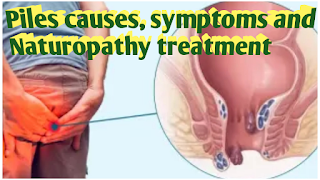World hepatitis day 2024
World Hepatitis Day is observed on the 28th of July every year. In 2024, World Hepatitis Day will be celebrated on July 28th. This day aims to raise awareness about viral hepatitis, its prevention, and treatment. It's an important public health issue, as hepatitis is still causing significant deaths globally.
Symptoms of hepatitis
Hepatitis is an inflammation of the liver that can be caused by a variety of factors, including viral infections, alcohol consumption, certain medications, and autoimmune conditions.
The main symptoms of hepatitis include--
1. Jaundice
Yellowing of the skin and eyes due to the buildup of bilirubin in the body.
2. Fatigue
A general feeling of weakness and tiredness.
3. Nausea and vomiting
Loss of appetite and discomfort in the stomach.
4. Abdominal pain
Pain or discomfort in the upper right part of the abdomen.
5. Dark urine
Urine that is darker than normal, indicating increased bilirubin levels.
6. Pale or clay-colored stools
Stools that are lighter than usual, also due to increased bilirubin levels.
7. Joint and muscle pain
Pain or achiness in the joints and muscles.
8. Swelling in the legs or ankles
Fluid retention, which can lead to swelling.
9. Itching
Intense itching over the entire body, particularly in the hands and feet.
These symptoms may vary depending on the type and severity of hepatitis. In some cases, hepatitis may not cause any noticeable symptoms, especially in the early stages. If you suspect that you have hepatitis, it's essential to consult a healthcare professional for an accurate diagnosis and appropriate treatment.
Causes of hepatitis
Hepatitis is an inflammation of the liver that can be caused by several factors.
The main causes include--
1. Viral hepatitis
This is the most common cause of hepatitis. Five different viruses (A, B, C, D, and E) can attack the liver and cause inflammation. Hepatitis A and E are transmitted through contaminated food or water, while Hepatitis B and C are spread through contact with infected blood or body fluids.
2. Toxins and drugs
Excessive alcohol consumption, certain medications, and illicit drugs can damage liver cells, leading to inflammation and liver disease.
3. Autoimmune hepatitis
This condition occurs when the body's immune system mistakenly attacks liver cells, causing inflammation.
4. Infections
Bacterial or parasitic infections, such as malaria or typhoid fever, can sometimes cause hepatitis as a secondary effect.
5. Genetic disorders
Certain inherited metabolic Liver disorders, such as hemochromatosis, may lead to liver inflammation and hepatitis.
6. Non-alcoholic fatty liver disease (NAFLD)
This condition is characterized by excessive fat buildup in the liver, which can lead to inflammation and scarring over time.
7. In some cases, no specific cause for hepatitis can be identified, resulting in what is called "cryptogenic hepatitis".
Prevention of hepatitis
Hepatitis prevention primarily focuses on stopping the spread of the hepatitis viruses and protecting the liver from damage.
Here are some ways to prevent hepatitis--
1. Vaccination
Get vaccinated against hepatitis A, hepatitis B, and hepatitis C if you are at risk.
The hepatitis A and hepatitis B vaccines are highly effective in preventing these illnesses.
A vaccine for hepatitis C is not currently available, but practicing safe behaviors can reduce your risk of hepatitis C transmission.
2. Practice good hygiene
Wash your hands thoroughly with soap and water after using the restroom, changing diapers, and before preparing or eating food.
Use hand sanitizers when soap and water are not available.
3. Avoid contaminated food and water
Cook meats thoroughly and avoid raw or undercooked seafood.
Wash fruits and vegetables thoroughly before consumption.
Drink bottled or treated water, and avoid consuming tap water that may be contaminated.
Follow food safety practices, especially during travel to areas with poor sanitation and hygiene.
4. Safe sex practices
Use condoms consistently and correctly during all sexual activities.
Get tested regularly for sexually transmitted infections, including hepatitis B and C.
Limit your number of sex partners and consider getting vaccinated for hepatitis B if you are at risk of exposure through sex.
5. Don't share personal items
Do not share personal items such as toothbrushes, razors, or nail clippers, as they may be contaminated with blood.
Avoid sharing needles, syringes, or other drug-injection equipment.
6. Avoid exposure to blood and body fluids
Wear protective gloves or barriers when handling blood or other body fluids.
If you work in a medical setting or deal with sharps (needles, razors, etc.), follow proper safety procedures to prevent accidental sticks and exposure to bloodborne pathogens.
7. Maintain a healthy lifestyle
Get vaccinated for hepatitis B if you are at risk and practice healthy habits, such as eating a balanced diet, getting regular exercise, and maintaining a healthy weight.
Drink alcohol in moderation, and avoid using tobacco and drugs.
8. Get regular checkups
Visit your healthcare provider for routine checkups and discuss your risk factors.
Regular screenings and vaccinations can help identify and prevent hepatitis before it becomes severe.
9. Education and awareness
Learn about the risks and prevention of hepatitis and share this information with your friends, family, and community.
Support initiatives for global hepatitis education and elimination programs.
By following these preventive measures, you can significantly reduce your risk of developing hepatitis and its potential complications.










